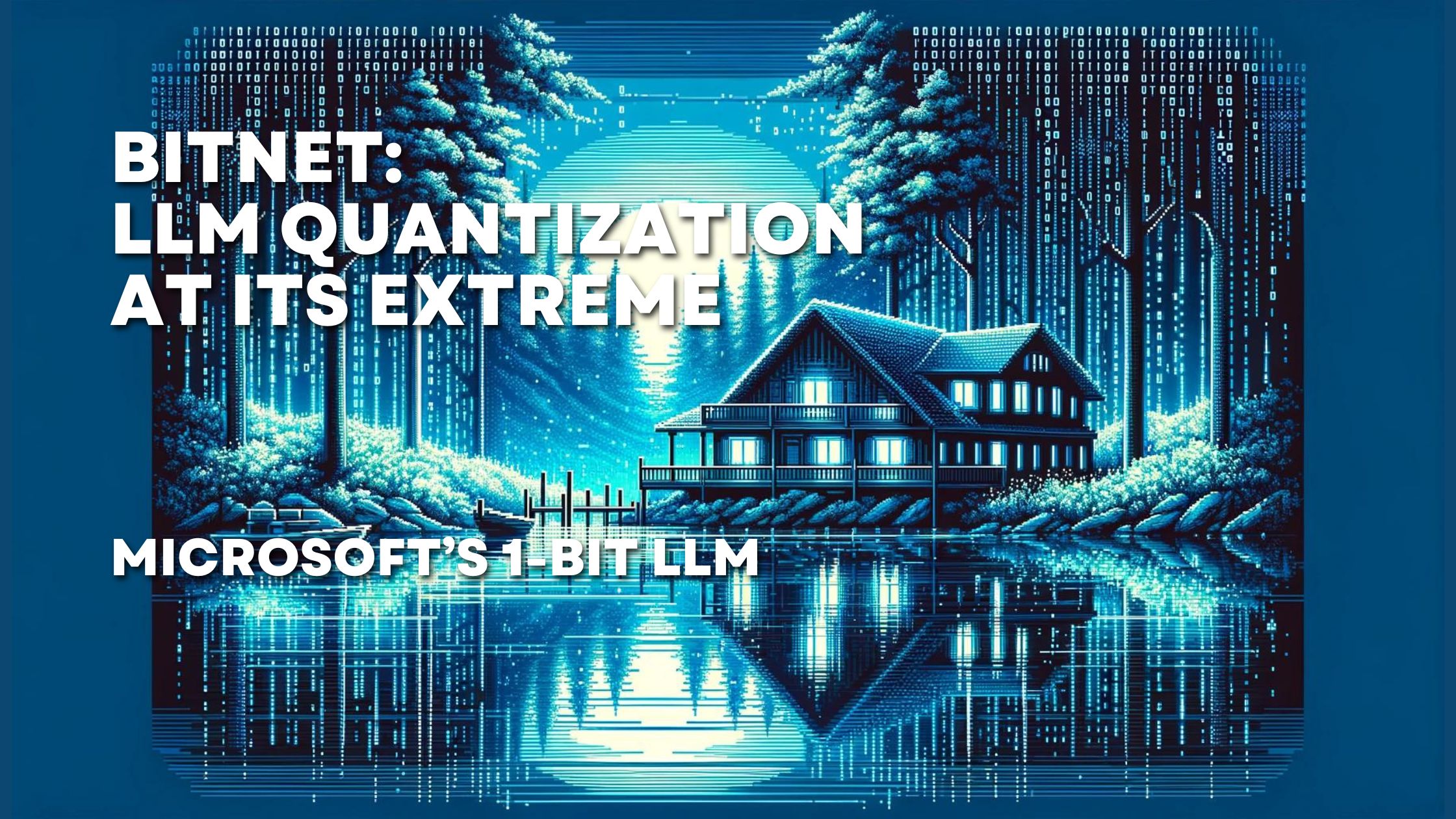- Pondhouse Data OG - We know data & AI
- Posts
- Pondhouse Data AI - Edition 3
Pondhouse Data AI - Edition 3
Use-Cases and Tips & Tricks from Data and AI

Hey there,
We’re excited to bring you the 3rd edition of our Pondhouse AI newsletter — your go-to resource for all things artifical intelligence. Whether you want to learn about AI concepts, use AI tools effectively, or see inspiring examples, we’ve got you covered.
Let’s get started!
Cheers, Andreas & Sascha
In todays edition:
News: Improving AI Safety with “Circuit Breakers”
Tutorial: Building Open Source LLM Agents with Llama 3
Enthusiast content of the week: 1-Bit LLMs to boost performance
Tool of the week: Marker - powerful tool to convert PDF to markdown
Find this Newsletter helpful?
Please forward it to your colleagues and friends - it helps us tremendously.
Top News
Improving AI Safety with Circuit Breakers
In the world of AI, safety and reliability are crucial, especially for companies aiming to prevent false or harmful outputs. A groundbreaking step forward is the introduction of "circuit breakers" in AI systems. A new paper titled "Improving Alignment and Robustness with Circuit Breakers" introduces a method to enhance the safety and reliability of AI systems. This approach, inspired by recent representation engineering advances, uses "circuit breakers" to prevent AI from producing harmful outputs.

Key Points:
Direct Control: Unlike traditional methods, circuit breakers directly control the AI’s actions, ensuring harmful behaviors are stopped instantly.
Enhanced Safety: Provides robust protection against powerful attacks, making AI interactions safer.
Wide Applicability: Can be used for both text and multimodal AI systems.
No Performance Impact: This technique does not negatively affect the model’s capabilities or performance.
For more details, you can read the full paper here.
Tutorials & Use Cases
Building Open Source LLM Agents with Llama 3
In this tutorial video, you’ll learn how to build open-source Large Language Model (LLM) agents using Llama 3. Here's a quick summary:
Introduction to Llama 3: Overview of Llama 3, its capabilities, and why it's useful for building LLM agents.
Setup and Installation: Step-by-step guide on setting up your environment and installing the necessary software.
Basic Configuration: How to configure Llama 3 for your specific needs.
Building and Training: Detailed instructions on building and training your LLM agent.
Deployment: Tips on deploying your LLM agent effectively.
For a more detailed guide, watch the full video here.
Also in the news
Apple Unveils New AI Foundation Models
At the 2024 Worldwide Developers Conference, Apple introduced Apple Intelligence, featuring advanced AI models integrated into iOS 18, iPadOS 18, and macOS Sequoia. These models improve text writing, notification summaries, image creation, and app interactions.
Highlights
Integrated AI: Deeply embedded into Apple's ecosystem.
User-Focused: Enhances daily tasks with adaptive AI.
Efficient Deployment: Optimized for on-device use without compromising performance.
For more details, visit the Apple Machine Learning Research page.
New Research: Scalable MatMul-Free Language Models
A new paper, "Scalable MatMul-Free Language Modeling," shows how to eliminate matrix multiplication (MatMul) in large language models while maintaining high performance. The proposed models significantly reduce memory usage, offer up to 10x memory savings, accelerate training by 25.6%, and increase inference speed by 4.57x. This advancement brings large-scale models closer to brain-like efficiency and points towards future optimization for lightweight AI applications.
For detailed information, read the full paper here.
Qwen2: New and Improved Multilingual AI Models
The Qwen team has announced Qwen2, an upgraded suite of AI models. Key features include:
Five Model Sizes: From 0.5B to 72B parameters.
Multilingual Support: Trained on 27 languages beyond English and Chinese.
Enhanced Capabilities: Better performance in coding, mathematics, and long-context understanding.
Open-Source: Available on Hugging Face and ModelScope.
Qwen2 models also show improved safety and reduced harmful responses.
For more details, read the full announcement here.
Enthusiast content of the week
BitNet: LLM 1-Bit Quantization
This week, we spotlight BitNet, a groundbreaking approach to language model quantization. By using 1-bit parameters, BitNet drastically reduces memory and computational demands, enhancing efficiency without sacrificing performance. This is achieved by eliminating matrix multiplications, which are replaced with simple additions due to the 1-bit quantization. Compared to traditional models, BitNet achieves the same accuracy with up to 41.2x less energy consumption and 7x higher inference speeds. This method could revolutionize the deployment of large language models, making them more accessible and sustainable.
For more details, read the full article:
Tool of the week
Marker
Marker is a powerful tool that converts PDF documents to markdown quickly and accurately. It is optimized for books and scientific papers, supporting all languages and various document types.
Why Marker?
Wide Range of Documents: Handles books, scientific papers, and more.
Language Support: Works with all languages.
Artifact Removal: Cleans up headers, footers, and other artifacts.
Formatted Output: Formats tables, code blocks, and converts equations to LaTeX.
Image Extraction: Extracts and saves images along with the markdown.
Performance: Operates on GPU, CPU, or MPS.
How it Works
Marker uses a pipeline of deep learning models to convert PDFs:
Text Extraction: Uses heuristics, Surya, and Tesseract for OCR.
Page Layout Detection: Determines reading order with Surya.
Block Formatting: Cleans and formats each block using heuristics and Texify.
Postprocessing: Combines blocks and processes the text with PDF Postprocessor T5.
For more details and to get started, visit the Marker GitHub page.
We hope you liked our newsletter and you stay tuned for the next edition. If you need help with your AI tasks and implementations - let us know. We are happy to help
